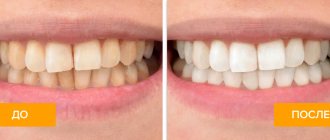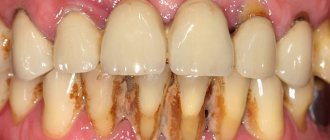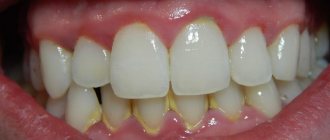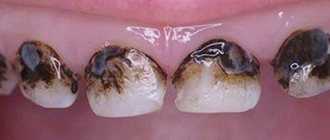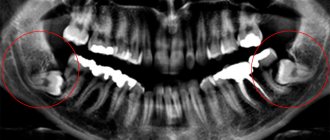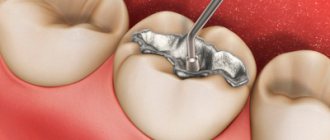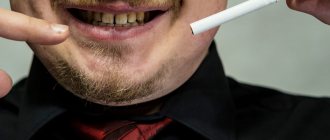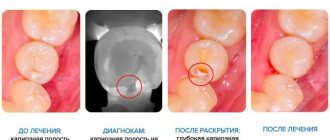Dental calculus is one of the most common pathologies. According to statistics, more than 65% of adults have it. Tartar should not be treated only as an aesthetic defect.
In addition to causing bad breath, tartar is the cause of many dental diseases and promotes infection in the body. Therefore, it is necessary to prevent stone formation, and if it forms, immediate treatment by a dentist.
What is tartar
Tartar is a hard, calcareous deposit on the surface of the tooth that is yellowish to dark brown in color. Initial plaque consists of food debris, dead cells, mucus and microorganisms. The stone is formed when soft plaque accumulates and thickens, and its gradual mineralization with calcium, phosphorus and iron salts. First, it forms in places where plaque accumulates the most: in the gingival zones, in the tooth sockets and in the interdental space. Most often on the inside of the dentition, where there is a hard-to-reach area for brushing teeth and the exit of the salivary gland canals. As the process progresses, it can cover the entire visible surface of the tooth and go under the gums.
It's all due to poor hygiene
Hard plaque is a special mineralized film that consists of many microbes. Poor daily brushing leads to their proliferation and promotes the growth of a soft, invisible film on the teeth. It, under the influence of microflora, begins to actively mineralize within fifteen hours.
Mineralization is completed after 7 days, and after 6 months full-fledged stones appear on the bone formations. The outer protective shell of the coronal part of the tooth, which is overgrown with plaque, begins to darken, but this is not the only negative aspect: hardened plaque (dental deposits) is the main infectious center and becomes the basis for the appearance of a number of diseases, which cause many troubles, including tooth loss.
Thus, cleaning hardened plaque is not only a hygienic aspect. This procedure can be called tooth-preserving, and competent treatment at the dentist is rarely complete without it. Before: replacing a lost or irreversibly damaged tooth with an artificial implant; installation of orthodontic braces; whitening or other procedures, the specialist carefully removes the stones so that the procedure leads to a positive result.
Tartar
How quickly does a stone form?
The rate of stone formation varies from person to person and depends on hygiene skills and factors contributing to stone formation. In the absence of brushing your teeth, within a few hours after eating, a thick film of a huge number of bacteria feasting and multiplying on food debris forms on the surface of the tooth. After a week, the film thickens due to mineralization processes. On average, it takes about 4–6 months to form a dense stone. Therefore, a preventive examination by a dentist is necessary at least once every six months.
Preventive measures
The best method of prevention is careful hygiene. Basic rules that should be followed to prevent the formation of stones and other problems with teeth are as follows:
- Teeth must be brushed after every meal;
- Before using the paste, you should use dental floss, since the brush cannot penetrate into all the spaces between the teeth;
- If you can't floss outside the home, you can chew chewing gum.
Symptoms
Signs of tartar:
- using a mirror you can see dark deposits on the teeth near the gums (mostly on the inside), which do not disappear after hygiene procedures;
- darkening of tooth enamel;
- constant bad breath;
- bleeding gums when brushing teeth;
- increased gum sensitivity;
- deepening and widening of gum pockets, exposure of tooth roots.
Only supragingival plaques can be seen visually; subgingival formations are diagnosed by a doctor.
Comments
I am 5 months pregnant and it seems to me that I have a lot of subgingival plaque because... My gums are starting to bleed, can I have them cleaned and remove stones in my position?
Evgenia (03.25.2020 at 14:02) Reply to comment
- Dear Evgeniya! During pregnancy, you can and should clean your teeth from all types of plaque, because it is during this period that women have an increased risk of developing gingivitis and periodontitis. And by the way, bleeding gums may actually indicate that you have one of these diseases. For pregnant women, only gentle methods of plaque removal, such as ultrasound, are suitable. The best time for procedures is the second trimester of pregnancy, so you better go to the dentist as soon as possible.
Editorial staff of the portal UltraSmile.ru (04/02/2020 at 09:14) Reply to comment
Write your comment Cancel reply
Why is tooth stone dangerous?
In addition to an aesthetic defect, tartar is a common cause of a repulsive putrid odor from the mouth. In addition, stone formation can provoke the development of severe dental diseases:
- caries;
- gingivitis;
- periodontitis;
- tooth loss.
The presence of stone deposits reduces the local immunity of the oral cavity, which increases the proliferation of bacteria and aggravates the manifestation of their pathogenic properties. The consequence of the activity of bacteria is the destruction of tooth enamel and the development of various inflammatory processes in the oropharynx. Subgingival stones destroy the connection between teeth and bone, causing them to loosen and fall out. With severely advanced processes, it is no longer possible to stop tooth loss.
Causes of tartar
The formation of tartar is a consequence of:
- insufficient or improper oral hygiene;
- disorders of mineral metabolism in the body, which is often associated with the presence of chronic diseases or genetic predisposition.
Factors that contribute to the formation of tartar, subject to insufficient hygiene, include:
- defective position of teeth;
- roughness of the tooth surface, often due to the installation of low-quality filling material or insufficient polishing;
- presence of braces and dentures.
- preference in the diet for soft and carbohydrate foods;
- one-sided chewing;
- smoking;
- alcohol abuse;
- hypersalivation (secretion of large amounts of saliva);
- a general decrease in the body’s immunity and the presence of foci of chronic infection.
Methods for removing subgingival calculus
Subgingival stone cannot be removed at home, just like mineralized supragingival stone. Moreover, when trying to do this, you can seriously injure periodontal tissue and provoke inflammation. Therefore, the only right decision is to go to the dentist.
Even if you cannot visually detect subgingival plaque, you need to contact your dentist twice a year to have it removed.
At the appointment, the doctor will conduct professional oral hygiene, which will help remove all types of deposits. Let's look at what methods and techniques are used specifically for removing subgingival calculus:
- Ultrasound: the most common method today that allows non-contact impact on deposits and crushing hard stone into the smallest particles. For the procedure in the subgingival area, the doctor uses special thin periodontal nozzles, while at the same time a stream of water is supplied to the oral cavity, which washes out the crushed pieces,
The most common method is ultrasonic removal. - laser: this is the safest way. The good thing about laser is that, in addition to effectively removing deposits, it has a disinfecting effect and does not cause tissue bleeding, but on the contrary, promotes their rapid healing.
The photo shows laser removal of deposits
Until recently, stone was also softened chemically, with the help of various gels and preparations, but now they are not used due to their high trauma and aggressive effect on teeth and surrounding tissues.
“I remember how I once had a stone removed from under my gums ten years ago. They did this with some specialized instruments and a bur, mechanically, and it was very painful - I was constantly tense in the doctor’s chair. Then the gums bled for a long time, hurt, and were swollen. Today this method is no longer used, everything is much simpler, safer and more effective, so I’m happy to go for cleaning if the need arises.”
Lannikova T.N., review from yell.ru
Smokers' tartar
There are practically no heavy smokers who do not have tartar. Tar from tobacco smoke and soot deposit a yellow coating on tooth enamel. It is easier for food debris to stick to this plaque and for bacteria to multiply comfortably. Gradually, under the influence of both saliva and tobacco smoke, various salts are deposited in plaque and brown tartar is formed. In addition, tobacco smoke contains toxic substances and heavy metals, which trigger the process of detachment of the gingival margin from the teeth. Food is stuffed into the deep gaps and optimal conditions are created for the growth of colonies of pathogenic bacteria. A regular toothbrush does not sweep out pathological contents from such pockets. And bacteria eat away the connective tissue between teeth and bone, exposing their roots. A dangerous inflammatory disease – periodontitis – gradually develops. Tartar deposited under the gum does not give a chance for self-healing, but turns the disease into a chronic form. Combined with the effects of tartar and destruction of the connective tissue that anchors the teeth, the process of development of periodontitis in smokers proceeds 3 times faster than in non-smokers. This leads to rapid tooth loss. According to statistics, 80-year-old smokers have 2.5 times fewer teeth than non-smokers.
Tartar: how to get rid of it at home
Most people understand that the best way to resolve any dental problems is to visit the dentist. However, not everyone likes to contact a specialist, delaying the visit until the last minute in the hope that the problem will somehow resolve itself. This is largely facilitated by advertising offering treatment for all occasions.
So how to remove tartar at home? Unfortunately, no way. Even the most expensive products will not be able to remove thick plaque and stone. However, ultrasonic or electric brushes, as well as special toothpastes, will help get rid of the soft plaque that is just beginning to form.
Prevention of stone deposits
Prevention of any disease is always cheaper than its treatment. This applies not only to the financial component, but also to the temporary and psychological component.
The most important thing in preventing dental diseases is proper oral hygiene.
How to brush your teeth
To prevent the formation of tartar, learn how to brush your teeth correctly:
- Movements when brushing your teeth should be “sweeping”, in the direction from the gums to the edge of the tooth.
- First brush your front teeth, then carefully treat the inner surface of the dentition.
- The chewing surface is cleaned with back-and-forth and circular movements. Don't forget about your wisdom teeth.
- The duration of cleaning should be at least 3 minutes. To do this, it is convenient to have an hourglass in the bathroom or to clean while listening to a certain musical composition.
- Brush your teeth at least twice a day. The first time is after breakfast, the second time after dinner. If you are prone to the formation of stones, brush your teeth additionally after each meal.
Choosing a toothbrush
Not everyone knows how important it is to choose the right brush. Listen to the experts:
- Choose a high-quality, medium-hard toothbrush, preferably with rubber blades, which increase the effectiveness of removing plaque and polishing teeth.
- Soft brushes are only suitable for children or during periods of bleeding and sore gums.
- Hard brushes can be used 1 or 2 times a week. They should not be used in places where the necks of the teeth are exposed, especially if the sawing cleaning is improper. This contributes to the formation of wedge-shaped defects.
- Don't forget to change your brush every month.
Interesting experiment!
American doctors conducted an experiment, the participants of which were divided into 5 groups.
The first group: brushed their teeth with regular brushes and expensive toothpaste for 1 minute.
Second group: brushed their teeth with regular brushes and expensive toothpaste for 5 minutes.
Third group: they brushed their teeth with regular brushes and cheap toothpaste for 5 minutes.
Fourth group: they tried to brush their teeth without a brush, by rubbing expensive toothpaste with their fingers.
Fifth group: brushed their teeth with regular brushes without toothpaste, but for at least 5 minutes.
The experiment lasted a week. Every day after the procedure, the cleanliness of the teeth was measured.
At the end of the week there were the following results (the more stars, the cleaner the teeth):
| Group number | Brushes | Paste | Cleaning time | Result |
| 1 | Regular | Expensive | 1 minutes | Bad result |
| 2 | Regular | Expensive | 5 minutes | Excellent result |
| 3 | Regular | Cheap | 5 minutes | Excellent result |
| 4 | Without brushes | Expensive | 5 minutes | No result |
| 5 | Regular | Without paste | 5 minutes | Good result |
Conclusion: it turned out that when brushing your teeth, the toothbrush and the time spent on the procedure are important. You can brush your teeth even without toothpaste; it will be much more effective than using toothpaste without a brush. And if you clean it correctly, there is almost no difference between expensive or cheap toothpaste.
Other hygiene rules
- For continuous use, use only therapeutic and prophylactic pastes from well-known companies. For people prone to the formation of stones, it is useful to periodically brush their teeth with abrasive whitening pastes, for example, 2 times a week.
- After each meal, thoroughly rinse your mouth with special elixirs, and if you don’t have them on hand, you can use plain water.
- Use floss (special thread) to remove plaque between teeth. Floss is used both after brushing your teeth and without it in the afternoon. However, do not make cutting movements (back and forth), so as not to damage the gums, the movements should be: up and down.
- After brushing your teeth, use special devices - irrigators, which, under the pressure of a stream of water, will clean all places that are difficult for a brush to reach from bacteria and food, and improve blood circulation in the gums and dental pulp. In addition, you can polish your teeth with a special irrigator attachment, then it will be more difficult for the stone to be deposited on smooth enamel. Today, irrigators are recognized by dentists as one of the most effective ways to prevent tartar.
- Quit smoking completely. Or, at worst, use electronic cigarettes, the vapor of which does not contain toxic substances and resins involved in the formation of stones.
- Get a preventive examination from your dentist at least once a year, and more often if indicated.
- Have your teeth professionally cleaned periodically.
Causes
The reasons for the occurrence of tartar, which cannot be removed at home, are:
1. Insufficient and poor-quality oral hygiene does not ensure sufficient removal of microbes that begin to actively multiply and “freeze”;
Note! This also includes incorrectly selected toothpaste, brush, brushing teeth “in haste,” and the absence of dental floss, brushes, rinsers, or irrigators in rituals.
2. Hard plaque occurs due to excessive consumption of soft foods and fast carbohydrates (flour and confectionery products). They promote abundant salivation, which provides favorable microflora for the proliferation of bacteria;
3. Bad habits - smoking, drinking alcoholic beverages (especially coloring ones, such as red wine), unhealthy diet;
4. Metabolic disorder, which leads to a change in the composition of saliva and an increase in free salt ions.
A combination of one or more reasons influences the success of tartar removal.
Plaque appears on all teeth, but the most common are the lower teeth on the inside. This is due to its proximity to the large salivary glands.
Symptoms of the disease
If a person is not attentive to the hygiene of his teeth, he is unlikely to examine the oral cavity with a flashlight to assess the degree of neglect of the situation.
Therefore, you can determine the presence of a problem not only visually, but also by indirect signs:
- bleeding gums - often completely painless and occurs only when brushing your teeth (naturally, after the impact of a toothbrush on sensitive gums, unpleasant sensations arise);
- bad breath - if there are no problems with the stomach, but the smell is present, it is worth considering that perhaps an impressive amount of stone has accumulated, since the active activity of microorganisms is associated with the release of sulfur compounds;
- swelling and soreness of the gums - a feature of the accumulation of plaque, which will be discussed below, affects the soft tissues, developing inflammatory processes.
Important! It is very important to remove tartar before gum recession begins - a decrease in soft tissue, “lowering” or “raising” of the gums. This leads to exposure of the tooth root and increased sensitivity.
Types of Tartar
Based on their location, there are two types of plaque:
- Supragingival - visible stone, located above the gum, often found on the lower front teeth on the inside and in the area of the upper molars;
- Subgingival - as the name suggests, plaque, which is located in the periodontal pocket, in the groove between the tooth and the gum, cannot be seen with the naked eye;
- Stone bridge - microbes can cover the enamel of several teeth in a row, the most advanced case.
Cleaning tartar will also depend on the method of its attachment to the surface:
- with the inclusion in the process of organic pellicles on “cement” (this is a specific tissue covering the root part of the tooth);
- with the inclusion of organic pellicles on the enamel in the process;
- synthesis on uneven abrasive surfaces, for example, in the early stages of caries disease, or at chipped sites (and also, as mentioned earlier, during the formation of food plaque);
- attachment in the depressions and ridges between teeth on the enamel or tooth root.
Consequences of dental plaque
Dentists know how to remove tartar to avoid damaging your smile.
What complications threaten?
- inflammation of the gums and gingivitis - tartar, especially the subgingival type, has a direct effect on the tissue, promoting softening and redness, then the pocket between the gum and tooth begins to increase, increasing the formation of new bacteria;
- periodontitis - in which bone tissue is also involved, which gradually begins to break down, which ultimately leads to complete loss of teeth.
Therefore, it is important to pay attention to the formation of tartar in a timely manner and contact a dental clinic to remove it.
Tartar removal
There are several ways to get rid of future diseases.
Ultrasound
Ultrasonic tartar removal is the most common and safe method used in dentistry today.
The principle of operation is small, rapid vibration of the tip of the device - the scaler. When it comes into contact with a tooth, it creates enough resonance to destroy hard plaque.
Additionally, the nozzle treats the tooth surface with a chlorhexidine solution or water, thus polishing the surface to prevent the attachment of new plaque.
The advantage is minimal impact on the native enamel.
Air Flow
In fact, the method is based on the destruction of plaque by a thin jet directed under high pressure, consisting of water and air, non-abrasive particles.
If necessary, additional antiseptic substances are used.
Laser
It is rarely used due to the high cost of the equipment, and the principle of operation is the same as that of ultrasound - a directed beam destroys the stone, and air or water “washes” it out of the dental spaces.
Mechanical cleaning
Sometimes a mechanical, that is, manual cleaning method is used using:
- hand scalers - metal sticks with straight and curved attachments;
- excavators - sticks with attachments, similar to spatulas;
- chisels - so called precisely because of their external resemblance to their larger brother;
- curette - thin metal hooks;
- rasps - the ribbed attachment is designed for scraping.
This type of cleaning is quite unpleasant and painful, but it is the most effective, especially with complex deposits.
However, if the doctor is careless, he can irreversibly damage the tooth enamel, so it is important to choose a dental clinic with professionals in the field of hygienic cleaning.
Which method to choose
The cleaning procedure most often includes several stages, which vary depending on the quantity and quality of plaque. But the standard set of actions looks like this:
- Ultrasound;
- Air-flow;
- Polishing with a brush;
- Remineralizing therapy.
Finally, the doctor will polish the surface of the tooth and coat it with fluoride to prolong the effect of the manipulation.
How tartar is removed in a particular case depends on the diagnosis. It is important that the dentist use a microscope to detect the early stages of plaque.
As a rule, even after improving nutrition and oral hygiene, it is necessary to come for a preventive examination, which includes professional cleaning every six months. This will avoid problems with gums, and will also allow timely detection of caries and other disorders.
Ultrasonic toothbrushes
Recently, a new gadget has appeared on the market - an ultrasonic toothbrush. In addition to mechanical cleaning, this brush provides ultrasonic treatment of hard-to-reach areas of the tooth and gums to a depth of up to 4 mm. Ultrasonic waves destroy bacteria and effectively remove pigmentation and deposits when mineralization begins. However, such a brush cannot remove formed tartar; this can only be done by a specialist using professional equipment. In addition, the use of an ultrasonic brush is effective and safe only for people with absolutely healthy teeth.
Methods for removing tartar used in dentistry
Previously, only mechanical cleaning was used to remove tartar in dentistry, which involved the use of special hand tools: scalers, curettes, excavators, smoothers, chisels, rasps. The procedure was labor-intensive, long and painful for the patient, and also very traumatic.
When manually removing tartar, a fairly large layer of healthy tissue was removed from the teeth and this led to unpleasant sensitivity of the teeth and thinning of the tooth enamel. Nowadays, mechanical removal of tartar is used extremely rarely, only in cases where the patient has contraindications to other methods of cleaning teeth from deposits.
Another outdated and rarely used method of removing plaque is to clean teeth from plaque using special chemical solutions.
The teeth were treated with preparations based on alkalis or acids that dissolve mineralized deposits. However, the chemical method of removing tartar is aggressive, it carries a high risk of burns to the soft tissue of the oral cavity, it negatively affects the condition of tooth enamel, so dentists have long abandoned its use. Nowadays, two modern and highly effective methods are used to remove tartar - ultrasonic cleaning and laser cleaning. We will tell you about these technologies in detail below.
Contraindications to ultrasonic brushes
Due to the presence of ultrasonic microvibration, the use of such brushes is not recommended for persons:
- with veneers, fillings and crowns, as their service life is reduced;
- with areas of loose and porous enamel, due to the fact that the development of the carious process accelerates due to the destruction of defective enamel;
- with gingivitis and periodontitis, due to the increased spread of infection by hematogenous route;
- with periodontal disease, as the process of bone destruction accelerates;
- having precancerous changes and cancer, due to the acceleration of the division of atypical cells.
These significant drawbacks significantly limit the use of ultrasonic brushes, since almost 95% of the adult population have certain problems. It is also not recommended to use any power brushes during pregnancy or for people with pacemakers.
Hardware ultrasonic cleaning.
This is the most popular and effective way to remove mineral deposits. Ultrasonic waves break up tartar and easily remove it from the enamel surface. Moreover, such cleaning has an antiseptic effect and is therefore also indicated for gum inflammation. If the stone formation is very dense, before the cleaning procedure, means are used to soften it, then ultrasonic removal of deposits is carried out. During ultrasonic cleaning in the area of the neck of the lower incisors, when the roots are exposed, there may be mild pain. Then, at the request of the patient, local anesthesia is applied.
Despite the presence of many contraindications for the use of ultrasonic toothbrushes, the use of ultrasonic cleaning when removing stone is necessary. First, the dentist will use visual guidance to avoid areas of thinned, porous enamel. Secondly, one-time professional cleaning does not have as negative an effect on fillings as twice-daily brushing.
Laser cleaning.
The newest non-contact method of removing hard dental deposits is highly effective and absolutely painless. However, the price is much more expensive than ultrasonic. Laser cleaning has the same contraindications as ultrasonic cleaning.
Air-flow
Refers to mechanical methods. A jet of air with a therapeutic abrasive mixture is supplied under pressure, which removes both soft plaque and hard deposits. The gum area may tingle during the procedure. It is less effective than ultrasonic and laser cleaning.
Manual method
Mechanical manual method of beating stones using special tools. Currently, it is outdated due to the painfulness of the procedure, the presence of complications and the emergence of more effective methods. It is used free of charge under the compulsory medical insurance policy in public hospitals or as an additional method of treatment if indicated. Due to the painfulness of the procedure, especially when removing subgingival stones, local anesthesia is performed. It is a relative contraindication for periodontitis due to high trauma.
Teeth stones are of the following types:
Stones on teeth (synonym - hard dental deposits) are usually divided into supragingival and subgingival.
- Supragingival calculus on the teeth (Fig. 1-6) – visible to the naked eye when examining the teeth, because always localized above the gum level. It may be dark or yellowish in color. A stone of such localization is not difficult to remove, which is usually carried out using ultrasound (however, very small dental plaque can also be removed using the Air-flow procedure).
- Subgingival stones on teeth (Fig. 7) are localized below the gum level, and therefore they are not visible during a normal visual examination of the teeth. However, in places where subgingival dental deposits are present, the gums usually have a bluish appearance, they are swollen and bleed easily. Also, sometimes when you press on the gum in these areas, a scanty purulent discharge may be released from under it. In the photo below you can see subgingival tartar, localized in a deep periodontal pocket.
Please note that the appearance of pink gums in the photo is completely normal. But after the gums peel off, we see a small amount of tartar and a large amount of destroyed bone around it. This picture is quite common for patients with periodontitis. Finding such stones is quite difficult. Firstly, a panoramic photograph of the teeth can help the dentist with this, because it will show the level of bone tissue around the teeth (the presence of such “bone pockets”).
If there are such pockets in the image, we immediately assume the presence of subgingival tartar in this area. The second method of detecting subgingival dental plaque is associated with the use of dental instruments. For this purpose, an air “gun” is usually used, which every dental unit has. The air flow from it moves the gum away from the root of the tooth, due to which the contents of the periodontal pockets become visible to a certain depth.
After the procedure
At the end of the procedure, regardless of the method of stone removal, the dentist must grind and thoroughly polish the enamel.
Sometimes, at the request of the patient, after cleaning, the teeth are coated with a special protective composition against infection and plaque buildup.
Within 15 days after cleaning:
- Do not use bleaching abrasive pastes;
- the use of toothpastes from the “sensitive” series, based on herbs and with an anti-inflammatory effect, is indicated;
- rinses with astringent and soothing properties are recommended;
- Do not eat spicy foods or dyes;
- categorically give up smoking or at least abstain for this period.
Comprehensive teeth cleaning: service from our dentistry in Moscow “Aesthetica”
To ensure high-quality removal of tartar, we offer our patients a comprehensive teeth cleaning service, which includes:
- Ultrasonic cleaning;
- Air Flow cleaning;
- Grinding and polishing of enamel;
- Fluoridation.
An integrated approach to teeth cleaning guarantees a high quality procedure and is an excellent prevention of caries and gum inflammation. After the cleaning procedure, our hygienists will definitely give you recommendations on proper oral hygiene to help keep your teeth beautiful and healthy.
In our clinic, modern equipment is used to carry out comprehensive teeth cleaning, and all conditions have been created for comfortable treatment and procedures. We are proud that we can offer you the best dental technologies, high-quality materials from world-famous manufacturers and, of course, our professionalism, knowledge and experience.
Dental clinic “Aesthetica” - with us your teeth will be healthy and your smile will be dazzling! Come to us: we have opened two branches for you in Moscow - in Barvikha and in Podsosensky Lane!
Are there any traditional methods for removing stones?
There are no home methods to remove stones in one procedure, like in clinics. Moreover, with extensive and long-fossilized formations, traditional methods will not help. Grandmother's recipes can only be used when stone formation begins, when the deposits are thick, but still loose and light. In this case, the following will help:
- cleansing teeth with radish pieces;
- It is also useful to eat a salad of grated radish with lemon every day;
- brush your teeth with fresh and already cooled coal ash;
- soften plaque with hydrogen peroxide, then brush your teeth with soda.
It should be noted that the first two methods will definitely not cause harm; they can be safely used, even if they do not help. But the last two options do not have clinical trials and proven effectiveness, and therefore may be unsafe. Therefore, you should not take such dubious and radical measures on your own when dental care is available to everyone.
When is curettage justified?
If there are a lot of deposits, they are located deep under the gums and the methods listed above do not allow you to completely get rid of them, then the doctor resorts to a procedure such as curettage. To carry it out, curettes are used - special instruments at the end of which there is a hook that engages the stone.
There are two types of curettage - closed and open.
Closed is used when periodontal pockets are less than 5 mm in depth. Actually, to carry it out you only need curettes and an ultrasonic scaler.
With closed curettage, periodontal pockets are cleaned with special hooks
An alternative to closed curettage can be the use of the Vector ultrasound device, whose impulses penetrate deep under the gums, eliminate the risk of injury and have a gentle effect on the roots of the teeth. The hardware method has a beneficial effect on tissues, improves their nutrition, and has a massage and disinfecting effect.
Open curettage is necessary if the periodontal pockets are deeper, which usually happens with progressive periodontitis, but here we are talking about a full-fledged surgical manipulation, since first the doctor exfoliates the gums, then cleans and polishes the roots, and then sutures the mucous membrane. If necessary, bone grafting is performed during surgery. After the procedure, drug support and anti-inflammatory therapy are required for rapid tissue healing.
With open curettage, before cleaning. peel off the gums
If there is a lot of plaque under the gums, then any procedure to remove it can be painful, so superficial or local anesthesia is first applied (with open curettage). Gels with lidocaine are often applied as a superficial “freeze”, which can cause an allergic reaction, so warn your doctor in advance if you are prone to allergies.
Contraindications
Contraindications for hardware teeth cleaning include:
- wearing dentures and braces;
- the presence of implants in the body, including pacemakers;
- ARVI, active stage of tuberculosis, HIV infection;
- oncological diseases;
- pregnancy (or with the permission of an obstetrician-gynecologist);
- childhood, until all baby teeth are replaced.
- pregnancy.
Pregnancy is a relative contraindication to dental cleaning. Dental procedures can be performed during a satisfactory pregnancy with the permission of an obstetrician-gynecologist. If there is a threat of miscarriage or other serious conditions, it will be recommended to postpone the removal of stone deposits and the beauty of the smile.

